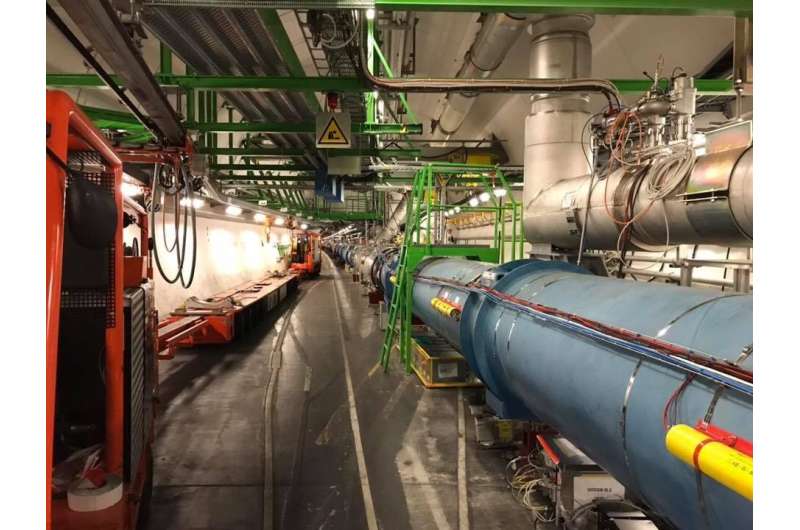Assessing the environmental impact of future 'Higgs factories'

In 2012 CERN's Large Hadron Collider (LHC) revolutionized particle physics when it was announced that the Higgs boson had been created and detected by the world's most powerful particle accelerator.
Yet, the work of the LHC isn't done. It is currently in its third run and being prepared for a high luminosity upgrade that will lead to more collisions and thus the creation of more Higgs particles. But eventually the accelerator will need to be retired and replaced.
The comparisons of power consumptions or luminosity delivered for a given power for future Higgs-producing colliders have been widely considered, but a new paper in The European Physical Journal Plus by CERN researcher Patrick Janot and the University of Geneva's Alain Blondel considers the environmental impact of future "Higgs factories" that could replace the LHC.
"What is new about this research and motivated by our personal interest in conservation, is the attitude with respect to environmental concerns," Janot says. "We are placing the environmental future of our planet as one of the top-level decision criteria when it comes to the choice, the design and the optimization of a collider."
In the paper, Janot says that he and co-author Blondel express the environmental impact in terms of carbon footprint per Higgs boson produced, suggesting that this figure of merit should be minimized when choosing the future Higgs factory.
The paper suggests that of five currently proposed replacement accelerator models —all of which have a "Higgs factory" stage — circular colliders have a fantastic physics capability and also the best energy efficiency in the case of Higgs boson studies.
"This advantage gets multiplied for a CERN facility by the better carbon emission property of the electricity it uses," Janot adds. "This difference reaches a factor of 100 in the case of the projects that are being considered and should definitely have a strong weight in the choice."
Janot concludes, "we believe it is important to send the message that scientists are sensitive to it and propose that this is taken into account in the choice of facilities."
More information: Patrick Janot et al, The carbon footprint of proposed e+e- Higgs factories, The European Physical Journal Plus (2022). DOI: 10.1140/epjp/s13360-022-03319-w
Provided by Springer



















